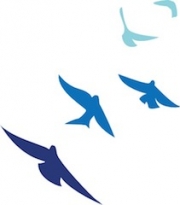In my last couple blog entries I’ve discussed stress, change, and anxiety. We are all familiar with anxiety in some form or another because we’ve all experienced it. For some people it may be situational and mild: for example, sweaty palms and a rapid heart beat when he have to take a test, or give a speech, or go on a date. Transient and mild anxiety is normal and uncomfortable, but doesn’t usually impair your quality of life. For other people, anxiety affects their social, academic, and professional lives, and impairs their daily lives. Panic attacks can be a symptom of anxiety and are the primary symptom of Panic Disorder (a type of Anxiety Disorder). They are very frightening and can be debilitating. Counseling, and especially Cognitive Behavioral Therapy (CBT) is an effective treatment for panic disorder.
Panic attacks are not uncommon, and they are something I have encounter and treat regularly in my counseling practice. This week I read a thought provoking article: “What a Panic Attack Physically Feels Like” by Lindsay Holmes and Alissa Scheller. In the article, the authors compiled descriptions of what panic attacks feel like from people who have experienced panic attacks, and then illustrated their experiences. Anyone who has experienced a panic attack will tell you that they are a downright frightening experience.
A panic attack is the abrupt onset of intense fear or discomfort that reaches a peak within minutes and includes at least four of the following symptoms:
- Palpitations, pounding heart, or accelerated heart rate
- Sweating
- Trembling or shaking
- Sensations of shortness of breath or smothering
- Feelings of choking
- Chest pain or discomfort
- Nausea or abdominal distress
- Feeling dizzy, unsteady, light-headed, or faint
- Chills or heat sensations
- Paresthesia (numbness or tingling sensations)
- Derealization (feelings of unreality) or depersonalization (being detached from oneself)
- Fear of losing control or “going crazy”
- Fear of dying
The symptoms can vary from person to person. However, what is universal, is that panic attacks can feel like a catastrophic event: a heart attack, suffocating, or unreality. This is because the physiological experience is real even if the person knows the cause is irrational; panic attacks often happen unexpectedly and can occur during sleep. People who experience frequent panic attacks become hyperaware of their physiological symptoms during the flight or fight response.
During panic attacks, the flight or fight response gets triggered and the sympathetic nervous system responds accordingly even if there isn’t an actual physical threat. People who suffer from panic attacks can become preoccupied with having future panic attacks and their flight or fight system goes into overdrive. Many people initially don’t realize it’s a panic attack and may seek help from a physician for their symptoms (heart palpitations, trouble breathing, etc).
Cognitive Behavioral Therapy has been shown to be one of the most effective types of psychotherapy for panic attacks. However, sometimes words cannot express feelings and experiences adequately. Images are also a very powerful expressive modality. As an Art Therapist and a Marriage and Family Therapist that utilizes both Cognitive Behavioral Therapy and Art Therapy, I can attest to the powerful impact of both modalities, and how they can be used together in a complimentary way.
The article I mentioned was not written by a psychotherapist or counselor, and the material was not gathered during counseling sessions, but I think the images and words are very powerful and provide a highly accurate picture of what a panic attack can feel like. The people who contributed their stories give an enlightening glimpse into the internal world of people suffering from panic attacks. If you are interested, please take the time to read the referenced article; I hope you find it as powerful and relevant as I did.

Leave A Comment